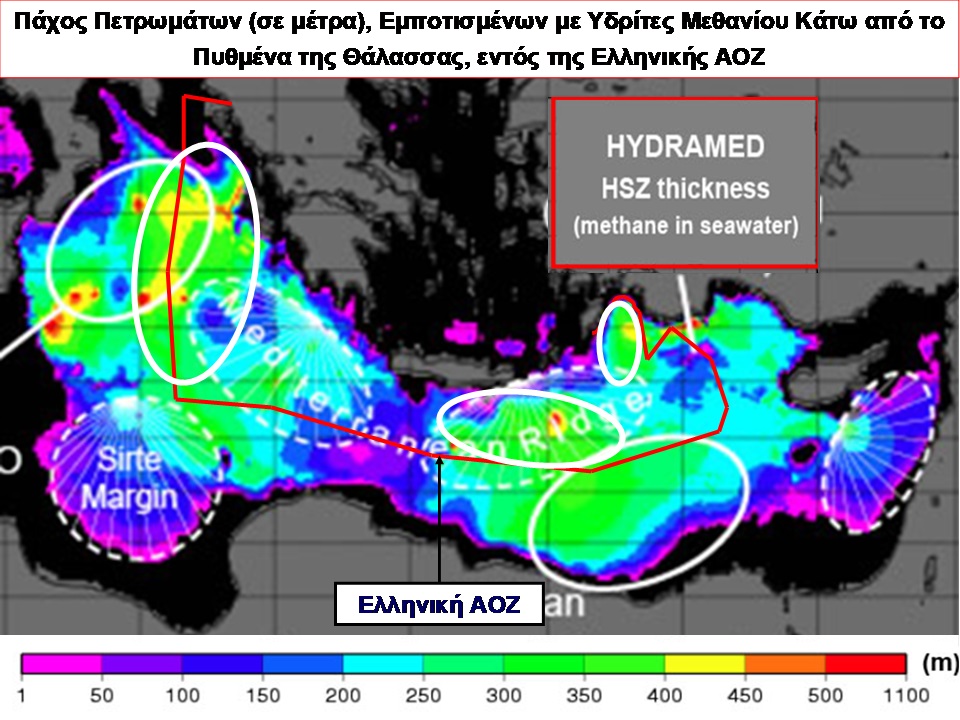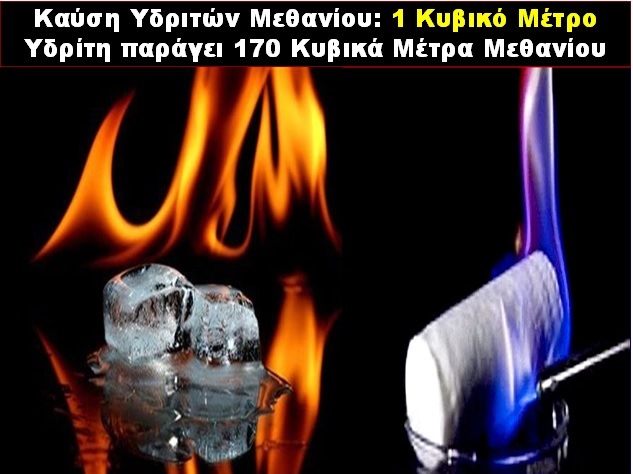20914 - The contribution of the utilization of methane hydrates
E. Conophagos, N. Lygeros
Translated from the Greek by Athena Kehagias
We have repeatedly stated, that the Greek EEZ contains the largest reserves of methane hydrates in Europe and of course the European Union.
And while our estimates are based on the results of the recordings made by the European institutions: Geophysical institute of Trieste, GEOAZUR France, the University of Barcelona and the University of Bremen, there seems to be a problem in some, understanding these new strategic data, in regards to energy and innovation.
Given the fact that methane (CH4) is 30 times more toxic than Carbon Dioxide (CO2) re: the global warming, most scientists, at an international level agree that global warming is not threatened mainly by the uncontrolled production of carbon dioxide alone, but rather of the expected release of methane from the seabed of the oceans.
As Chris Field, director of Global Ecology department at the Carnegie Institute of Washington recently stated to the Associated Press: “We have entered a vicious cycle. As temperature increases, the more we have increases to the temperatures of enclosed seas, with more methane been released into the atmosphere, and the more the temperature rises, and so on. “.
To utilize therefore the underwater methane hydrates turning them in to carbon dioxide and water, with energy production, we reduce the intensity of global warming by about 30 times, creating therefore conditions for reversing the warming of our planet.
Based on all the above stated, we suggest for Greece to contribute to the reversal of the phenomenon of global warming, attracting through a new hydrocarbons licensing round – with similar financial incentives – investors in our country, who could refine the existing technicalities of commercial development and production of methane hydrates.
The hydrates are hydrated hydrocarbons.
Six water molecules contain one molecule of methane.
Increased water temperature could cause the dissolution of crystals, when the natural conditions of their preservation change (temperature and pressure).
In this case we will have a release of great amounts of methane.
Samples of solid methane hydrates have already been taken in the Ionian Sea and southern of Crete, which as is well known are in the form of ice and they burn very easily, since its surface vaporizes, producing 170 times their volume in methane.
We should note that, the particular area situated off the coast of Preveza and Lefkada, is expected to encompass rich concentrations of methane hydrates, similar to those recently utilized with success on a trial basis, by the State Oil Company of Japan.
We think that, this rich presence of methane hydrates in the Ionian Sea region but also Southern of Crete could constitute an important laboratory of creation of new technologies in regards to unconventional hydrocarbon production



